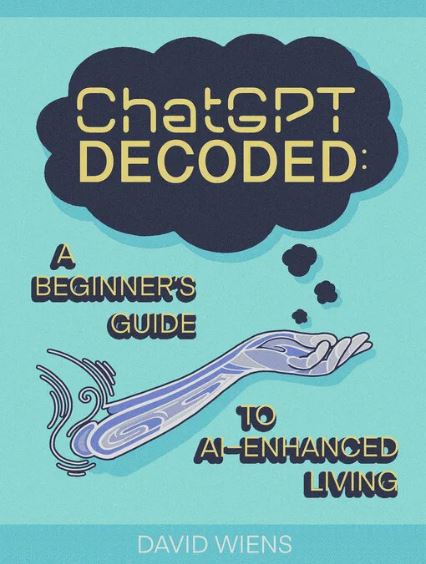Generative AI
Adults & Seniors
by LearnX Digital

Generative AI
Flex your creative muscles with Generative AI!
From generating symphonies to literature, these machines can turbo-charge your creative prowess with a few taps of the finger. But that's not all—they're also transforming industries and sparking new waves of innovation.
Read on to discover how it's empowering us to achieve new heights in innovation!
What is Generative AI?
Generative AI, short for Generative Artificial Intelligence, refers to a class of artificial intelligence systems designed to generate new content, or output that mimic or resemble human-created content. Unlike traditional AI systems that rely on explicitly programmed rules (e.g. distinguish a car from a bus), generative AI leverages machine learning techniques, particularly within the domain of deep learning. Deep learning refers to teaching a computer to think and make decisions on its own by showing it a large quantity of examples.
How do Generative AI tools like Large Language Models work?
Large language models, such as GPT-3 (Generative Pre-trained Transformer 3), are sophisticated artificial intelligence models designed for natural language understanding and generation tasks. They can understand, generate, and respond to human language in a conversational way.
Here is an analogy of how Large Language Models work:
Suppose you are training a friendly new alien who has just come to Earth. This alien has a humongous brain with a basic understanding of communication and loves math but doesn’t know any English at all.
How can it learn to tell stories?

(Generated with AI; Bing Image Generator)
You bring the alien to a magical library containing all the books in the world. It reads everything, but it doesn’t just read words one at a time or memorise words. The alien reads in a smarter way, identifying patterns and relationships between words. To learn even better, it practices telling stories.
It takes a story and tries to predict the next word, for example:
Once upon a ___,
Time (70%)
Twice (20%)
Lake (10%)
If it’s wrong, it readjusts its brain connections and tries again.
Now, the alien has a basic understanding of patterns in English (one might say it is pre-trained). But it’s only good at predicting the next word, rambling on and on.
You then sit the alien down and have a long chat. You ask it for many stories based on different prompts and genres and give the stories a score. By giving the alien feedback, it gradually learns which types of responses you prefer.
Through this training with the alien, it learns to tell intriguing stories.
|
Did you know?
Large Language Models like ChatGPT are not new. You might have used tools based on such technologies, like Google Translate or autocorrect.
A vast amount of data and computing power made tools like ChatGPT incredibly powerful beyond its predecessors!
|
Curious to see how Generative AI is used in our libraries?
Get to know Generative AI through StoryGen, an ExperienceIT prototype, which lets you add a twist to well-loved stories and see them come alive through an immersive visual experience.
StoryGen is available at the Stories Come Alive Room at Level 1 of Punggol Regional Library on weekdays, when there are no programmes, until 30 October 2024.
-
How is Generative AI applied in various industries today?
Generative AI has a variety of applications in the world today, and here are some simple examples:
· Creating Realistic Images: Generative AI can generate lifelike images, whether it's designing new characters for video games or generating realistic photos that don't actually exist. This opens new possibilities in arts and entertainment. For example, game developers can use Generative AI to concoct realistic virtual worlds and environments for their games.
· Language Generation: Chatbots and virtual assistants often use generative AI to understand and respond to human language, making conversations with computers more natural and helpful. For example, Microsoft has utilized generative AI in various areas, including natural language processing for chatbots (Microsoft Bot Framework) and productivity tools like Microsoft Office.
· Drug Discovery: In the field of healthcare, generative AI is used to suggest and design new molecules for potential drugs, speeding up the drug discovery process.
· Simulation and Training: Generative AI can build realistic simulations for training purposes, such as flight simulators for pilots or virtual scenarios for medical professionals.
· Personalization in Marketing: Generative AI helps personalize recommendations in online shopping, streaming services, and social media based on user preferences and behaviour.
These applications showcase how generative AI is making an impact across different industries by creating, simulating, and enhancing various types of content and interactions.
Stay ahead of Generative AI trends in the workplace! Explore our Future of Work series at https://go.gov.sg/nlbfow
Fun Fact about Generative AI
Did you know that OpenAI's GPT-3, the language wizard of the AI realm, doesn't just think big—it thinks 175 billion times bigger! That's right, this colossal language model boasts a mind-boggling 175 billion parameters, the internal magic that makes it the Shakespeare of the digital age. To put it in perspective, that's like having an army of 175 billion tireless neurons inside your computer, working together to generate mind-blowingly coherent and contextually spot-on text across the vast expanse of human knowledge. GPT-3 didn’t just break records; it rewrote the very definition of what's possible in the world of artificial intelligence!
Have fun with Generative AI! Test your ability to differentiate between photos and AI-generated images in our online quizzes at https://sure.nlb.gov.sg/generative-ai/games/
-
Ethical Considerations about Generative AI
Generative AI raises some important ethical considerations:
· Misinformation: Generative AI can be used to generate realistic but fake content, like deepfake videos or fake news articles. They can be misused by bad actors to fabricate untrue information and spread falsehoods.
· Privacy Concerns: AI models trained on large datasets may inadvertently capture personal or sensitive information. There's a risk that the generated content could reveal private details about individuals.
· Disruption on Industries: As AI becomes more capable, many existing jobs will be altered, and workers need to start using AI now or risk being left behind. How can we enable all segments of society to adapt to these technological changes and ensure fair opportunities for everyone?
· Lack of Accountability: It can be challenging to trace back the source of AI-generated content. Who is culpable if something harmful is generated and distributed using generative AI?
· Environmental Impact: Training large AI models can be energy-intensive, contributing to environmental impact and carbon emissions.
Addressing these ethical considerations involves responsible development, transparent practices, and careful consideration of the societal impact of generative AI technologies.
AI-generated images have been one of the causes of online scams and misinformation happening today. Test your ability to differentiate between photos and AI-generated images in our online quizzes at https://sure.nlb.gov.sg/generative-ai/games/
You can also join our programme to see how experts debate on the potential benefits and pitfalls of Generative AI. Listen to the different perspectives and vote for the winning side.
-
How can I use Generative AI Responsibly?
Generative AI has great potential for innovation, creativity, and efficiency, and personalisation. However, Generative AI also has certain limitations today.
· Creativity Constraints: Since Generative AI relies on patterns learned from existing data, it can sometimes struggle to generate truly groundbreaking or entirely new concepts.
· Overlooking Details: AI models may sometimes miss small details, such as producing images that look good at first glance but don’t hold up under closer inspection.
· Bias in Data: If the data used to train the AI model has biases, the AI might reproduce or amplify those biases, leading to content that is skewed or reflects unfair stereotypes.
Researchers are actively working to address these limitations, and Generative AI continues to improve over time. However, understanding these constraints helps manage expectations and encourages responsible use of this technology.
Here are some tips that can help us to harness the potential of Generative AI safely and responsibly:
· Critical Thinking: Apply critical thinking when consuming AI-generated content. Verify information from reliable sources when needed.
· Ethical Use: Avoid using AI to generate deceptive or harmful content. Use it in ways that align with ethical standards.
· Bias Awareness: Be aware of potential biases in AI-generated content and strive to mitigate them.
· Privacy: Understand how your data is used when interacting with AI systems and ensure you're comfortable with their privacy policies.
· Promote Positivity: Support positive applications of AI, such as its use in creative problem-solving and developing personalised solutions.
· Stay Informed: Stay updated on AI developments and their impact on society.
By following these guidelines, individuals can use Generative AI in a responsible manner that considers both its capabilities and potential impact.
Undecided if Generative AI brings more power or peril to society? See what others and experts have to say here: https://go.gov.sg/rtbs-gen-ai
-
Where can I learn more?
We have curated a treasure trove of articles, videos and podcasts for you to learn more about GenAI!
Visit https://go.gov.sg/sure-gen-ai1 to access them now!
Prefer books instead? Check out these Generative AI book recommendations:
Title: Generative AI – How ChatGPT and Other AI Tools will Revolutionize Business
By: Tom Taulli
This book will show how technology is used by startups and large companies; as well as its challenges and risk factors.
Borrow it here: https://nlb.overdrive.com/media/9905358Title: Rise of Generative AI and ChatGPT - Understand How Generative AI and ChatGPT Are Transforming and Reshaping the Business World
By: Utpal Chakraborty & Soumyadeep Roy
A comprehensive overview of Generative AI and ChatGPT, from its history, to its development and applications as well as challenges and considerations.
Borrow it here: https://nlb.overdrive.com/media/9765433
Title: ChatGPT Decoded: A Beginner’s Guide to AI-Enhanced Living
By: David Wiens
Explore how you can integrate ChatGPT into your everyday life in a meaningful and transformative way. This book is suitable for beginners!
Borrow it here: https://nlb.overdrive.com/media/9903083
Title: AI for Social Good
By: Rahul DodhiaExplore how AI can advance humanity and improve lives.
Borrow it here: https://nlb.overdrive.com/media/10543687
-
Try it yourself!
Let your creative imagination go wild with the help of Generative AI today!
Check out our 1-minute tutorial on how you can harness Generative AI to create your very own Visual Novel!
Here are some tips to write effective prompts!
- Be Clear: State your question or request clearly to help the AI Chatbot (e.g. ChatGPT, Bard) understand what you're looking for.
- Provide Context: Give some background information if needed to help the AI Chatbot generate a more relevant response.
- Be Specific: The more specific your prompt, the better the response you're likely to get.
- Ask Open-ended Questions: Instead of yes/no questions, ask open-ended ones to encourage more elaborate responses.
Here are the prompts we used to create our Visual Novel:
- Write me a short 2 minute story about team of space soldiers who travel to a sandstorm-locked planet to combat an evil alien invasion.
- Make it sci-fi themed with a female protagonist. End it on a cliffhanger.
- Add dinosaurs, lasers, and explosions into the story.


